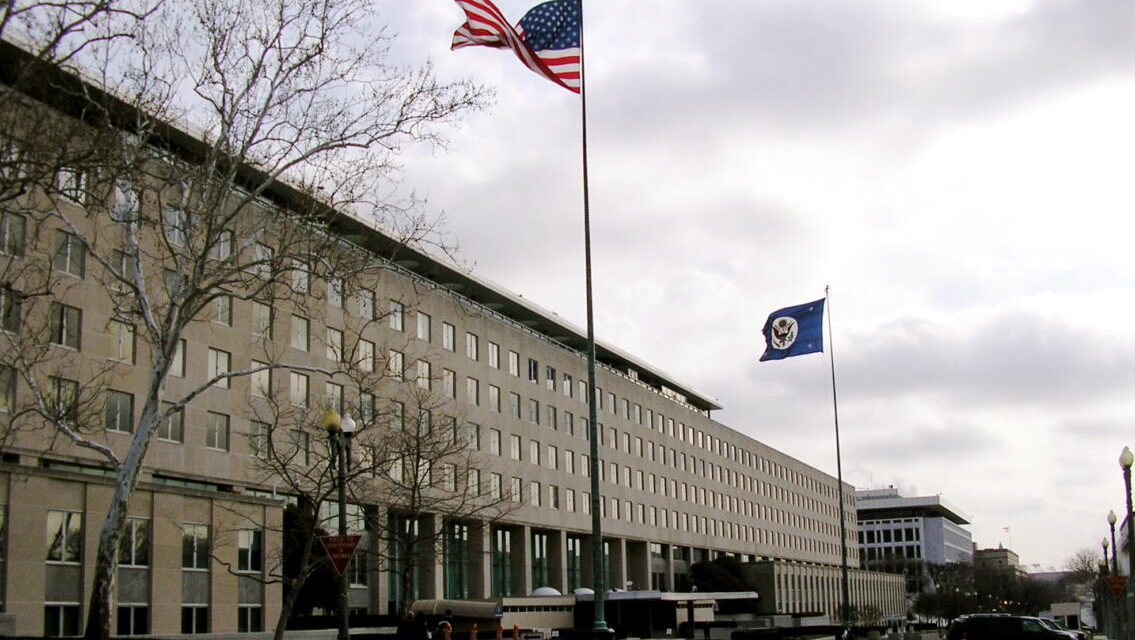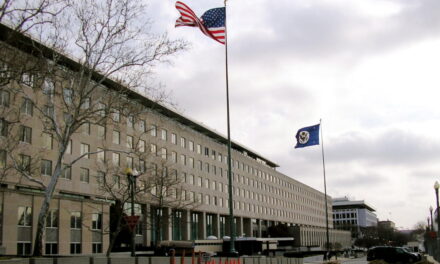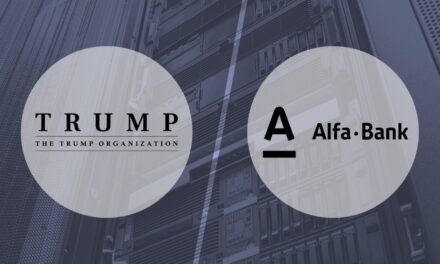A timely review of what propaganda does to America … and it’s only getting worse under the regime of the Obama administration. The US losing its moral compass in a turbulent world. Battling whistleblowers by prosecution for treason, a most secretive administration, revising and enactment of the Smith-Mundt Modernization Act of 2012 and undermining protest by the cognitive infiltration theory perpetuated by Cass Sunstein.
Nine days after the attacks Netanyahu expanded his list of foes that would be prime targets in the Zionist-devised “war on terror.” In a speech before the US House of Representatives’ Government Reform Committee on September 20 [2001], Netanyahu suggested that US vengeance in the face of 9/11 terrorism should be visited upon “Iran, Iraq, Syria, Taliban Afghanistan, Yasser Arafat’s Palestinian Authority, and several other Arab regimes, such as the Sudan.” Netanyahu also named “Osama bin Laden in Afghanistan, Hizbullah and others in Syrian-controlled Lebanon, Hamas, Islamic Jihad, and the recently mobilized Fatah and Tanzim factions in the Palestinian territories, and sundry other terror organizations based in such capitals as Damascus, Baghdad, and Khartoum” as legitimate targets. Netanyahu’s diatribe was no less than a declaration of war against the entire Arab/Muslim world with few exceptions.
These regimes mount a world wide propaganda campaign to legitimize terror, besmirching its victims, exculpating its practitioners, as we witnessed in this farcical spectacle in Durban the other week. I think, that to see Iran, Libya and Syria call the U.S. and Israel racist countries that abuse human rights, I think even Orwell could not have imagined such a grotesque cynicism.
Take away all the state support and the entire scaffolding of international terrorism will collapse into the dust. The international terrorist network is thus based on regimes: on Iraq, on Iran, on Syria, on Taliban Afghanistan, Yasser Arafat’s Palestinian authority, and several other Arab regimes such as the Sudan. These regimes are the ones that harbor the terrorist groups. Osama bin Laden in Afghanistan, Hizbullah and others in Syrian controlled Lebanon, Hamas Islamic Jihad, and the recently mobilized Fatah and Tanzim factions in the Palestinian territories, and sundry other terror organizations based in such capitals as Damascus, Baghdad, and Khartoum.
These terrorist states and terror organizations together constitute a terror network whose constituent parts support each other operationally as well as politically. For example, the Palestinian groups cooperate closely with Hizbullah which, in turn, links them to Iran and Syria and to bin Laden. These offshoots of terror also have affiliates in other states that have not yet uprooted their presence, such as Egypt, Yemen, Saudi Arabia. Now the question is: how did this come about, how did this terror network come into being?
The growth of this terror network is the result of several crucial developments in the last two decades. The chief among them is the Khomeini revolution which established a clerical Islamic state in Iran. This created a sovereign spiritual base for formatting a strident Islamic militancy, a militancy that was often back by terror. Equally important was the victory in the Afghan war, of the international Mujaheddin brotherhood. I suppose that the only way I can compare it is to say that the international Mujaheddin is to Islam what the international brigade was for international communism in the Spanish civil war.
It created an international band of zealots. In this case their ranks include Osama bin Laden who saw their victory over the Soviet Union as providential proof of the innate superiority of faithful Muslims over the weak infidel powers. They believe that even the superior weapons of a superpower could not withstand their superior will. To this should be added Saddam Hussein’s escape from destruction at the end of the Gulf war. His dismissal of U.N. monitors and his growing confidence that he can soon develop unconventional weapons to match those of the west.
Finally, the creation of Yasser Arafat’s terror enclave centered in Gaza gave a safe haven to militant Islamic terrorist groups such as Islamic Jihad and Hamas. Like their Mujaheddin cousins, they and their Fatah colleagues, drew inspiration from Israel’s hasty withdrawal from Lebanon, glorified as a great Muslim victory by the Syrian backed Hizbullah.
The revealing statements of these Zionist warmongers were consistent with a broader Israeli strategy outlined by Benjamin Netanyahu and his Zionist associates in the 1980s. In 1979 and 1984 Netanyahu and other Israeli leaders organized two conferences to discuss terrorism under the auspices of the Jonathan Institute. The purpose of the two events was to seduce Western military, intelligence and political figures to join Israel’s crusade against the Muslim world, deceptively disguising their imperialist agenda as a “war against terrorism.” The second conference in 1984 produced a book edited by Netanyahu entitled “Terrorism: How the West Can Win”. “The two conferences organized by the Jonathan Institute, in Jerusalem in July 1979 and in Washington, D.C., in June 1984, were major events and highly effective for Israeli and Western propaganda,” wrote Edward S. Herman and Gerry O’Sullivan in their book The “Terrorism” Industry: The Experts and Institutions That Shape Our View of Terror.
It did not take long for Israeli leaders to inform us of how beneficial the 9/11 attacks were for Israel’s anti-Arab/Muslim agenda. On Sept. 12, 2001, the New York Times quoted a jubilant Benjamin Netanyahu. In reference to the 9/11 attacks, Netanyahu said: “It’s very good. … Well it’s not good, but it will generate immediate sympathy [for Israel].” “[The September 11 attack will] strengthen the bond between our two peoples, because we’ve experienced terror over so many decades, but the United States has now experienced a massive hemorrhaging of terror,” he said.
The Israeli public, the New York Times reported, “took cold comfort in concluding that Americans now share more of their fears.” The article further reported that Israel’s political and military leaders were content the attacks “would awaken the United States to the threat of global terrorism” and have the effect of lessening American government pressure on Israel, giving the regime in Tel Aviv a free hand to suppress the Palestinians.
The Semantics of Terrorism by Edward S. Herman
It is widely believed that “terrorism” is the instrument of the weak, who resort to it out of frustration at their perceived mistreatment and inability to obtain relief by peaceful means. This is a serious mistake. Terrorism is mainly an instrument of the strong, who have the resources to terrorise, a frequent interest in using terror to keep opponents of their rule under control, and the cultural power to define terrorism to exclude themselves and pin the label on their enemies and targets. These targets, successfully named “terrorists”, are frequently the victims of really serious terrorism, which has induced their own lesser terrorist response.
Thus, in 1988 the United States Pentagon named the African National Congress as one of the “more notorious terrorist groups” in the world, although the ANC represented a people who had been subjected to severe long-term terrorisation by the apartheid government of South Africa. This labelling resulted from the fact that the terrorising government was “our ally”–in the words of US president Ronald Reagan–and so its enemies became terrorists while it was exempted from the label in a straightforward process of politicised word usage. The “strong” here are the United States and its South African ally; the weak is the ANC. This pattern is commonplace, as is the ability of the strong to label their targets–and victims–terrorists.
The Terrorism Industry
The ANC victims of South African state terrorism, the Mayan peasants of Guatemala terrorised by the US-sponsored Guatemalan army, and the Kurds of Turkey, all know who the real terrorists are, but they do not have the resources to fund researchers and think tanks to examine and define terrorism from their perspective; nor do they have access to the Western mainstream media that would allow them to describe in detail and publicise effectively the nature of the violence they suffer. Western governments and corporations do have such resources and access, and they long ago created a virtual industry to deal with the subject of terrorism. This industry has supplied the appropriate definitions and models that ensure that South Africa, Guatemala and Turkey will not be terrorists but will rather be victims of terrorism. I have called it an “industry” because there is an effective demand for its services from governments and businesses, and a set of suppliers has come into existence to meet that demand.1
The terrorism industry comprises government officials and bodies, governmental and quasi-private think tanks and analysts, and private security firms. The “private sector” of the industry is heavily interlocked with government intelligence, military and foreign policy agencies, and is funded by and serves both governments and business firms. The analysts supplied by the private sector of the industry, along with those working in government, constitute the “experts” who establish and expound the terms and agenda demanded by the state. In accord with the state agenda, these experts invariably see the West as a victim of terrorism, and most of them identify national liberation movements seeking escape from colonial or neocolonial rule either as terrorists or (before 1990) as a threat to “democracies” because they were being “manipulated” by the Soviet Union and its proxies.
The terrorism industry is multinational, with close ties between government and private sponsors, institutes and experts in and between the United States, Israel and Great Britain, but extending to other members of the “Free World”.
Writing with O’Sullivan, a doctoral candidate at the Univ. of Penn., Herman (Finance/Wharton) continues his chastisement of American foreign policy–this time with an examination of how the American elite supposedly manipulates public opinion into being repulsed by individual acts of terror while our government supports terror in the name of countless right-wing governments.
In his last outing (Manufacturing Consent, coauthored by Noam Chomsky in 1992), Herman suggested that the media serve basically as a foil for the establishment. Here, he and O’Sullivan take the next step, asserting that the media are tools used by the elite to present terrorism in a way that serves elitist domestic political interests: a “reawakened” America, a termination of détente, and a building-up of US military, forces and the arms industry.
However, the authors never question whether national media channels–networks, news magazines, major dailies–are actually in disagreement with these goals. Instead, they grind on, theorizing that the designation of terrorists is a highly political choice. Thus, the authors say, Western experts and media have focused attention on “selective, relatively small-scale terrorists and rebels, including some genuine national liberation movements. . .and they have identified the main terrorists of the world, as victims engaging in ‘counterterror.'” The authors are unrelenting in their argument (“The service of the terrorism industry has been very much needed in the West as cover for its own activities and crimes”), accusing the US of the worst sort of Orwellian doublespeak. Unconvincing–except to true believers in American depravity.





